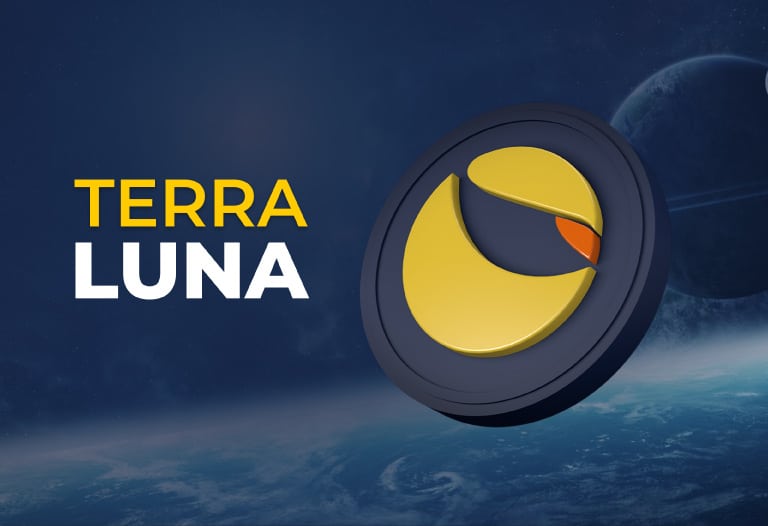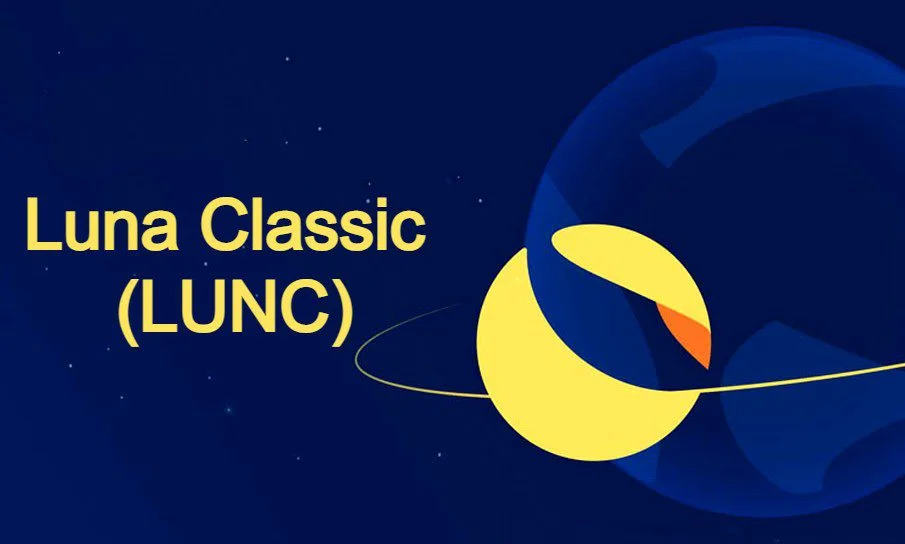Overview of Terra Classic Luna
Terra Classic Luna (LUNC) emerged as a fork of the original Terra (LUNA) blockchain following the latter's collapse in May 2022. LUNC retains the original blockchain and ecosystem, while a new Terra (LUNA) blockchain was launched with a different token.
LUNC aims to restore value to the Terra ecosystem and regain its position as a prominent blockchain for decentralized applications (dApps). It retains key features such as the Columbus-5 consensus mechanism, which ensures fast and secure transactions.
Obtain recommendations related to bubble crypto that can assist you today.
Key Features and Functionality
- Columbus-5 Consensus Mechanism: Provides fast and secure transaction processing.
- Decentralized Applications (dApps): Supports a range of dApps, including decentralized finance (DeFi) protocols and non-fungible token (NFT) marketplaces.
- Anchor Protocol: Offers a stablecoin lending and borrowing platform, allowing users to earn interest on their LUNC holdings.
- Mirror Protocol: Enables the creation of synthetic assets that track the price of real-world assets, such as stocks and commodities.
Technical Analysis of LUNC

The technical analysis of LUNC involves studying its historical price performance using various technical indicators and charting techniques. This analysis helps identify key support and resistance levels, trend patterns, and potential trading opportunities. By understanding the factors influencing LUNC's price movements, such as market sentiment, news events, and ecosystem developments, traders can make informed decisions.
Historical Price Performance
LUNC's price history exhibits periods of significant volatility, with sharp price swings and extended consolidation phases. Key support and resistance levels have emerged at various price points, indicating areas where buying or selling pressure tends to intensify. Identifying these levels is crucial for determining potential reversal points and trading strategies.
Trend Patterns, Terra classic luna
Technical analysis of LUNC reveals various trend patterns, including uptrends, downtrends, and sideways consolidation. Uptrends are characterized by a series of higher highs and higher lows, while downtrends exhibit lower highs and lower lows. Consolidation periods occur when the price action remains within a defined range, indicating indecision among market participants.
Technical Indicators
Traders employ a range of technical indicators to analyze LUNC's price movements. Moving averages, Bollinger Bands, and Relative Strength Index (RSI) are commonly used indicators that provide insights into trend strength, volatility, and momentum. By combining multiple indicators, traders can gain a more comprehensive understanding of LUNC's technical outlook.
Enhance your insight with the methods and methods of flux crypto.
Market Sentiment and News Events
Market sentiment and news events can significantly impact LUNC's price movements. Positive sentiment, driven by favorable news or ecosystem developments, tends to support price increases, while negative sentiment can lead to sell-offs. Monitoring news and social media sentiment can help traders gauge market sentiment and identify potential price catalysts.
Community and Development
The Terra Classic Luna community is a vibrant and passionate group of individuals who are dedicated to the success of the project. The community is highly engaged on social media and in online forums, and they are always willing to lend a helping hand to new members. The community's sentiment towards the project is overwhelmingly positive, and they are confident that LUNC has a bright future.
Notice neo cryptocurrency for recommendations and other broad suggestions.
The Terra Classic development team is hard at work on a number of initiatives that are designed to improve the project's scalability, security, and usability. These initiatives include the development of a new consensus mechanism, the implementation of a new smart contract platform, and the launch of a new stablecoin. These developments are expected to have a significant impact on the future of LUNC, and they are likely to make the project more attractive to investors and users.
Key Initiatives
- Development of a new consensus mechanism
- Implementation of a new smart contract platform
- Launch of a new stablecoin
These initiatives are expected to have a significant impact on the future of LUNC, and they are likely to make the project more attractive to investors and users.
Use Cases and Applications
 Terra Classic Luna (LUNC) has several current and potential use cases within the crypto industry. One of its primary uses is as a medium of exchange for payments. LUNC can be used to purchase goods and services from merchants who accept cryptocurrency payments. LUNC is also being utilized in various decentralized finance (DeFi) applications. These applications allow users to lend, borrow, and trade crypto assets in a decentralized manner. LUNC can be used as collateral for loans, as a payment method for transaction fees, and as a reward for liquidity providers.
Terra Classic Luna (LUNC) has several current and potential use cases within the crypto industry. One of its primary uses is as a medium of exchange for payments. LUNC can be used to purchase goods and services from merchants who accept cryptocurrency payments. LUNC is also being utilized in various decentralized finance (DeFi) applications. These applications allow users to lend, borrow, and trade crypto assets in a decentralized manner. LUNC can be used as collateral for loans, as a payment method for transaction fees, and as a reward for liquidity providers. Non-Fungible Tokens (NFTs)
LUNC is also being used in the creation and trading of non-fungible tokens (NFTs). NFTs are unique digital assets that can represent ownership of digital or physical items. LUNC can be used to purchase NFTs on marketplaces such as OpenSea and Rarible.Investment Considerations
Evaluating the investment potential of Terra Classic Luna (LUNC) requires careful consideration of its market capitalization, liquidity, and risk profile. Understanding the potential risks and rewards associated with investing in LUNC is crucial for investors.
Market Capitalization and Liquidity
Terra Classic Luna's market capitalization is a key indicator of its overall market value. A higher market capitalization generally indicates greater liquidity, which makes it easier for investors to buy and sell LUNC without significantly impacting its price.
LUNC's liquidity has improved since the collapse of the Terra ecosystem, but it remains lower compared to other cryptocurrencies. Investors should be aware that low liquidity can result in higher price volatility and potential difficulty in executing trades, especially during periods of high market activity.
Risk Profile
Investing in Terra Classic Luna carries significant risks, primarily due to its past volatility and the ongoing uncertainty surrounding the Terra ecosystem. The collapse of the Terra ecosystem has damaged LUNC's reputation and raised concerns about its long-term viability.
Additionally, LUNC is a speculative asset with no inherent value or utility. Its price is driven primarily by market sentiment and speculation, making it susceptible to sharp price swings.
Risk Management Strategies
Investors considering investing in LUNC should adopt prudent risk management strategies to mitigate potential losses. These strategies include:
- Diversification: Allocating investments across a range of different assets to reduce exposure to any single asset.
- Position Sizing: Investing only a small portion of one's portfolio in LUNC, commensurate with their risk tolerance.
- Stop-Loss Orders: Setting orders to automatically sell LUNC if it falls below a predetermined price level, limiting potential losses.
Investors should also stay informed about the latest developments within the Terra Classic ecosystem and monitor LUNC's price performance closely to make informed investment decisions.
Comparative Analysis

Terra Classic Luna (LUNC) shares similarities with other blockchain projects in the crypto space, particularly those focused on decentralized finance (DeFi) and smart contract development. However, LUNC also has unique characteristics that differentiate it from its competitors.
One key similarity between LUNC and other DeFi projects is their focus on providing users with access to a range of financial services, such as lending, borrowing, and trading. LUNC also shares similarities with other smart contract platforms, such as Ethereum and Solana, in that it allows developers to build and deploy decentralized applications (dApps) on its network.
Competitive Landscape
The competitive landscape for LUNC is dynamic, with several other projects vying for market share in the DeFi and smart contract development space. Some of the key competitors to LUNC include:
- Ethereum (ETH): A well-established smart contract platform with a large developer community and a wide range of dApps.
- Solana (SOL): A high-performance blockchain known for its fast transaction speeds and low fees.
- Binance Smart Chain (BSC): A blockchain platform backed by the Binance exchange, offering low fees and fast transaction speeds.
Differentiation and Competitive Advantage
Despite the competition, LUNC has several key differentiators that could help it maintain a competitive advantage:
- Focus on community: LUNC has a strong and active community that is actively involved in the project's development and governance.
- Low transaction fees: LUNC offers low transaction fees compared to other DeFi and smart contract platforms, making it an attractive option for users.
- Cross-chain compatibility: LUNC is working on developing cross-chain compatibility, which would allow it to interact with other blockchains and expand its ecosystem.
